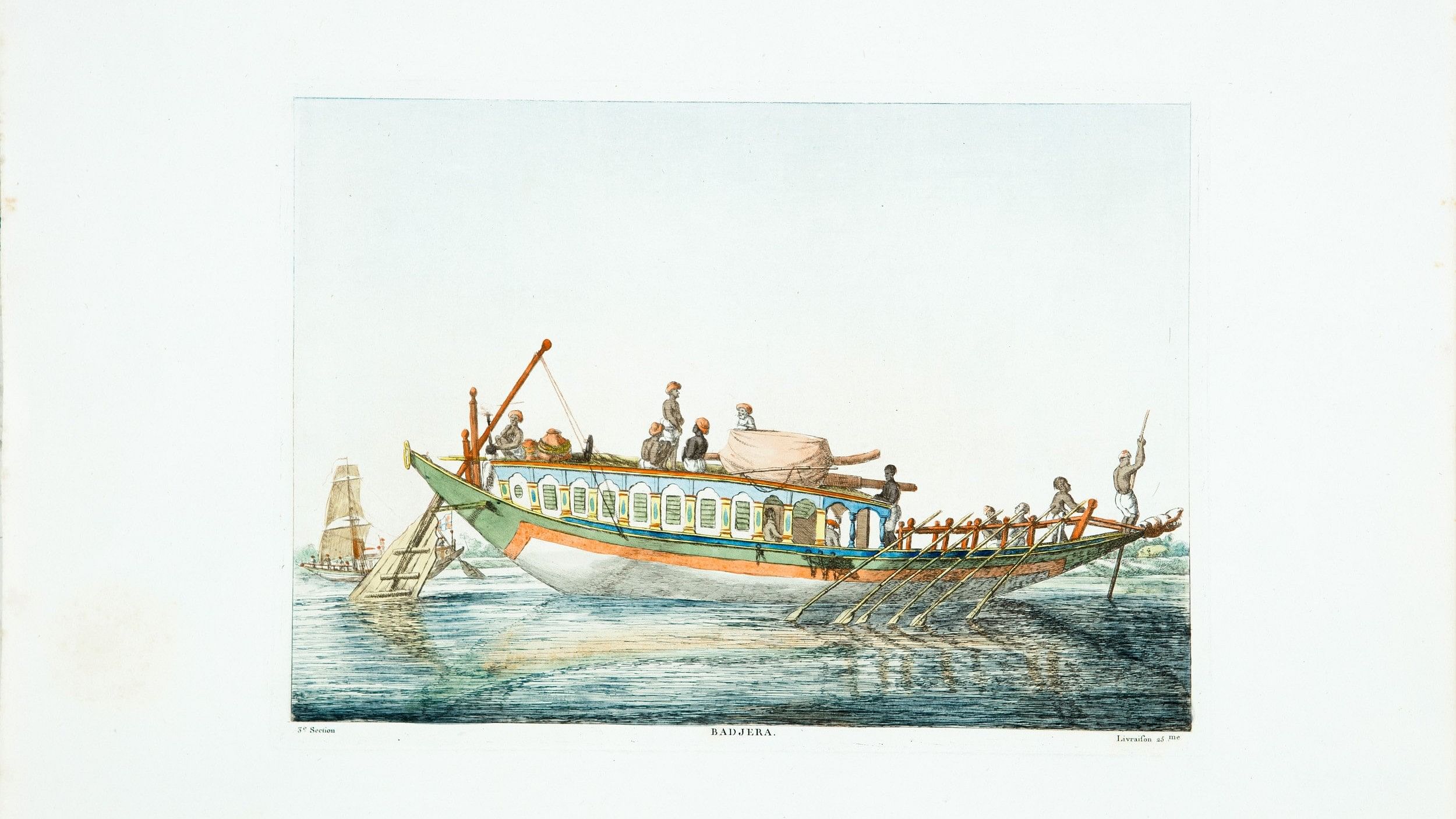
DAG Gallery brings to Mumbai for the first time a vast series of 118 coloured etchings that Flemish artist F Baltazard Solvyns called Les Hindoûs. In collaboration with Dr Bhau Daji Lad Museum, the exhibition consists of a set of the Paris edition of the artist’s Indian etchings. Curated by Dr Giles Tillotson, Senior Vice President, Exhibitions, DAG, the show is accompanied by a book which introduces, illustrates and contextualises this body of work.
“Hailing from Antwerp, François Baltazard Solvyns lived in Calcutta during the last decade of the 18th century and developed an ambitious project to present an encyclopaedic vision of the people and customs of eastern India in his time. He stayed on the margins of European society and engaged with all aspects of Indian life that teemed around him, making portraits of people from all ranks. Back in Europe, he published nearly 300 prints in four volumes, from 1808-12, with bilingual descriptive text in French and English. The works in this exhibition are taken from a complete set of this Paris edition,” informed Giles Tillotson.
A foreigner’s view of India’s 18th century, the exhibition focuses on Bengal and neighbouring regions, where the artist lived and worked for over a decade starting in 1791. Solvyns roamed the back lanes of Calcutta and explored the city’s outlying districts to meet people of all kinds and classes. The show, thus, includes representatives of every profession and class of Indian society, depicting festivals, sacred rites, animals, birds, insects, trees, crops, various kinds of boats, carriages and musical instruments.
“F B Solvyns was the first artist to cast his eye over a swathe of Indian peoples from the eastern region, moving the artistic visual discourse from that of gods and kings to ordinary citizens of the country. This was a huge change and even if the intent was documentative, centuries later, his etchings continue to mesmerise us for the wealth of detail he brought to his image-making, including the habitations, foliage, clothes, means of transportation and other accoutrements that made up their life in the 18th century,” said Ashish Anand, CEO and Managing Director, DAG.
Trained as a marine painter, Solvyns embarked on a journey to India in July 1790 to escape political unrest in northern Europe, and in the hope of making a fortune. “Solvyns’s status as an unlicensed resident got him to live at a succession of addresses in central Calcutta around Tank Square. He lived somewhat on the margins of the city’s European world, and in closer contact with its Indian quarters. Exploring Chitpore and other native districts, and meeting residents to assemble the material for his great work, he learnt far more about the Indian life of Calcutta than did most other Europeans of his time,” writes Tillotson in the book.
Solvyns’ primary subjects include Castes and Professions, Festivals and Ceremonies, Costume and Dress, Renouncers, Material Culture, Household Servants, The Natural World, Reception and Legacy.
“In the 18th century, when Solvyns lived in Calcutta, India’s relationship with Europe was not on equal terms; but two hundred years on, we can return his gaze with equanimity and ease, to explore not just what his depiction of India tells us about him, but also examine whether we can learn in it anything about ourselves. Solvyns may not always seek to please, but his searching gaze will certainly intrigue us and may make us look afresh at things we thought we knew only too well,” said Anand.
Travelling to Mumbai following a successful showing in Delhi in 2021, Les Hindoûs, Solvyns’s second, enlarged edition that was published by the artist in Paris between 1808 and 1812, a four-volume set and now a rare find, is a documentation of the people and material culture that Solvyns encountered over the decade he lived in Bengal during the 1790s. When Drishyakala first opened at Delhi’s Red Fort, it included a complete set of Oriental Scenery, 144 aquatints of Indian architecture and landscape, published in London by Thomas and William Daniell between 1795 and 1808. That too was an exercise that involved showing to Indian audiences a view of the country as seen by, and intended for, Western eyes.
“Interestingly, the Museum’s collection includes several clay figurines that were created referencing Solvyns’ etchings in the early 20th century, almost 200 years after these books were published. While Solvyns’ commentary on each illustration may raise some concerns, these large etchings and accompanying clay figurines provide a rare and invaluable glimpse into the occupations, festivals and attire of 18th-century Bengal,” added Tasneem Zakaria Mehta, Managing Trustee & Director, Dr Bhau Daji Lad Museum.
People of Bengal: Coloured Etchings by Baltazard Solvyns will continue at Dr Bhau Daji Lad Museum, Mumbai, till 29 June 2024.